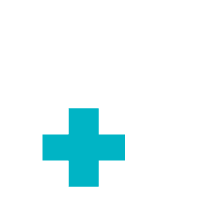
What is Entropion In Dogs
Entropion in dogs is a condition where the eyelid rolls inward, causing the eyelashes and fur to rub against the eye's surface, leading to irritation and potential damage. Entropion is most often a hereditary condition, meaning it is passed down from parents to offspring. Certain breeds are predisposed to entropion, including: Chinese Shar Pei, Doberman Pinscher, English Bulldog, Rottweiler and Spaniels.
Written by Dr. Mariella Roberts, Veterinary Surgeon, Animal Trust Vets CIC | Published August 2025 | Review date August 2027 | This advice is for UK pets only and is not a replacement for seeing a vet

Signs of entropion in dogs
Redness and inflammation of the eye
Excessive tearing (epiphora)
Squinting or holding the eye closed.
Rubbing or pawing at the affected eye.
Discharge from the eye, which may be watery or mucus-like.
Cloudiness or a bluish tinge to the cornea
When to contact your vet
If you notice your dog’s eye has an eyelid that turns inward, you should make an appointment with your vet promptly to avoid any possible further damage to the eye.
Diagnosis
History and physical examination of the eye
Fluorescein Stain Test applying a special dye (fluorescein) to the eye to see if any corneal ulcer is present
Numbing drops, in some cases, your vet may use numbing drops to temporarily relax the eyelid and see if it unrolls, helping to confirm the diagnosis
Tear tests may also be performed
Treating Entropion in Dogs
Surgery for Entropion, surgical intervention involves carefully removing a section of skin from the affected eyelid to correct its position.
Sometimes a two-stage approach, with a primary and secondary surgery, is common to minimise the risk of over-correction (ectropion).
In young puppies, temporary stitches (tacking) may be used to hold the eyelid in a more natural position until they mature.
Antibiotics and artificial tear lubricants may be used to help treat secondary problems that have developed and to protect the cornea, respectively.
Prevention of Entropion in Dogs
Entropion cannot be entirely prevented due to its hereditary nature:
Responsible breeding practices can minimise the risk of passing on the genetic predisposition to future generations
Routine check-ups allow for early detection of entropion and other eye problems, especially in breeds prone to the condition
Monitoring for symptoms
Eye hygiene with appropriate cleaning products can help prevent secondary infections and allow for early detection of issues
Outlook
The outlook for dogs with entropion is generally very good with timely treatment, typically surgical correction. While some dogs may require multiple surgeries, most dogs recover and live pain-free, normal lives after successful correction. If left untreated, entropion can lead to corneal damage, scarring, and vision loss.
